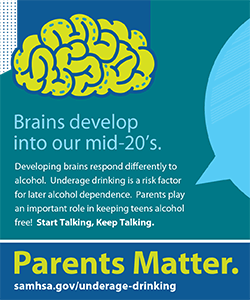|
 That adds up to more than 66,000 injuries a year on average, and it
only counts infants and toddlers who visit the emergency room.
Injuries are on the rise, and roughly four in five are due to falls,
researchers report in Pediatrics. That adds up to more than 66,000 injuries a year on average, and it
only counts infants and toddlers who visit the emergency room.
Injuries are on the rise, and roughly four in five are due to falls,
researchers report in Pediatrics.
“What’s surprising is how many children are still experiencing
nursery product-related injuries serious enough to result in a trip
to the emergency department - one every eight minutes,” said senior
study author Dr. Gary Smith, director of the Center for Injury
Research and Policy at Nationwide Children’s Hospital in Columbus,
Ohio.
Concussions and other head injures appear to be driving the surge in
emergency room visits, Smith added by email.
“This increase parallels an increase in awareness on a national
level about concussions, especially sports-related concussions, and
the potential consequences,” Smith said.
For the study, Smith and colleagues examined emergency room data on
injuries associated with baby gear from 1991 to 2011.

During the early years of the study there was a significant decline
in injuries, which researchers attributed to fewer accidents
associated with baby walkers. In the last eight years of the study,
however, the number of injuries surged by 24 percent.
Overall there were almost 1.4 million injuries related to baby gear
during the study period, researchers estimate.
The most common culprit was baby carriers, which accounted for
almost 20 percent of the accidents. Injuries may happen when parents
don’t use buckles and safety straps properly, or when infants are
placed on a high surface like a table or counter instead of on the
floor, doctors say.
Cribs, mattresses and bedding were a close second, accounting for 19
percent of injuries. Drop-side cribs were banned in 2011 because of
the high injury rate associated with these moving parts, and doctors
also started telling parents to avoid soft crib bumpers that year.
Soft bedding, pillows, blankets and stuffed animals can cause
suffocation and other injuries, as can ill-fitting or soft
mattresses.
Strollers were involved in 17 percent of injuries. Parents can
prevent accidents by using buckles and straps to keep babies secure,
and reduce the odds of toppling strollers by storing bags underneath
instead of hanging off the back. Wider wheel bases are also safer,
and parents should use wheel locks to keep strollers in place when
they’re parked.
Toys like walkers, jumpers and exercisers were associated with 16
percent of the accidents in the study.
[to top of second column] |

Accidents declined during the earlier years of the study in large
part because walkers got safer, Smith said.
“Stationary activity centers, such as the Exersaucer, came onto the
market, which are baby walker-like products without wheels,” Smith
said. “This gave parents a safer alternative.”
One limitation of the study is that it only looked at emergency room
visits, and likely underestimated the total number of injuries, the
authors note. The study also lacks data on what caused injuries.
Carriers, for example, aren’t a problem when they’re used properly,
said Dr. Elizabeth Powell, a pediatrics researcher at Northwestern
University in Chicago who wasn’t involved in the study.
“As an ED clinician, I see infants who are not properly restrained,
or those who fall from carriers placed on counters, beds or other
furniture,” Powell said by email. “While this detail is outside the
scope of the report, this is why there are injuries associated with
this product.”
Rising injury rates in recent years might mean at least some parents
are busier and more distracted than in the past, said Dr. Tanya
Altmann, founder of Calabasas Pediatrics in California and a
researcher at the University of California, Los Angeles.
“I see more and more parents at the park or out and about with their
babies, not interacting with their babies but with their face in
their phone,” Altmann, who wasn’t involved in the study, said by
email. “A reaching or grabbing baby trying to get their parents'
attention is often when falls and accidents occur.”
SOURCE: http://bit.ly/2mSqqqx Pediatrics, online March 13, 2017.
[© 2017 Thomson Reuters. All rights
reserved.] Copyright 2017 Reuters. All rights reserved. This material may not be published,
broadcast, rewritten or redistributed.
 |